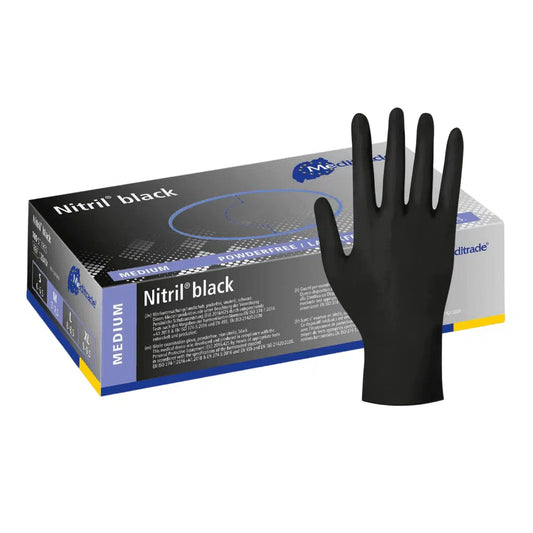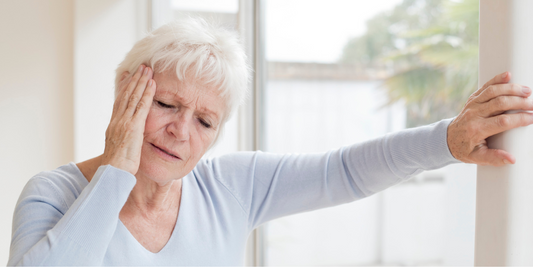
Vitiligo: The invisible load behind the white spots
Have you ever wondered what it means when the skin suddenly loses its color? Imagine you wake up one morning and discover that some areas of your skin are brighter, almost white, while the rest remains unchanged. For millions of people worldwide, this is not just an idea, but a reality - a reality that is called vitiligo. This enigmatic skin disease is more than just a cosmetic problem; It raises questions that go far beyond the obvious: What causes the loss of pigmentation? What effects does this change have on the life of those affected? And how can you deal with it when you suddenly live in a world in which every spot on the skin becomes a new challenge? Accompany us on a journey through the world of white stain disease and learn to better understand the disease.

What is vitiligo?
Vitiligo, also known as white spot disease, is a chronic skin disease that is characterized by the loss of melanocytes, the cells responsible for the production of Melanin. This leads to depigmented skin areas, which often appear on the skin as white spots. Vitiligo affects people of all ages, ethnic groups and genders worldwide, but can vary in terms of their appearance, their symptoms and their psychological effects.
How many people are affected by the disease in Germany?
Vitiligo is much more than a change in skin color - it is a disease that influences the life of those affected in many ways. It not only brings with it physical challenges, but also psychological stress that can make everyday life difficult. But despite all the uncertainties and questions that Vitiligo brings with it, there is hope. Progresses in medical research and therapy offer better and better opportunities to relieve the symptoms and improve the quality of life of those affected. It is even more important to realize that acceptance and self -care are central components in dealing with vitiligo. Ultimately, it is about not to define yourself about the loss of pigmentation, but to find your own strength in who you are beyond the external appearance. Imagine how it would be not to consider Vitiligo as a restriction, but as part of your own identity.

At what age does the disease occur?
Vitiligo can occur in any age, but the first signs of the disease are typically shown between the ages of 10 and 30. The appearance is not limited to a certain age group, which is why both children and adults and older people can be affected. There are reports on vitiligo cases that begin at infancy, as well as cases in which the disease only occurs in advanced adulthood.
The exact age in which vitiligo occurs can vary and may depend on genetic, autoimmunes and environmental factors. Although the exact mechanisms that trigger the occurrence of vitiligo are not yet fully understood, the beginning of the disease can be influenced by various factors such as physical or emotional stress, skin trauma or sunburns.

Etiology of the vitiligo
The exact etiology of the vitiligo has not yet been fully clarified. However, it is assumed that the pathogenesis of the disease is multifactorial, with genetic predispositions, autoimmunological processes and environmental factors playing a crucial role.
-
Genetic predisposition: About 20 % of vitiligo patients have a family accumulation of the disease, which indicates a genetic predisposition. Specific genes associated with immune regulation and melanin biosynthesis could be identified in individuals concerned.
-
Autoimmunological factors: Vitiligo is often classified as an autoimmune disease in which the immune system incorrectly attacks and destroys the body's melanocytes. This results in a focal or generalized depigmentation of the skin.
-
Environmental factors: Exogenous stressors, physical trauma, UV-induced skin damage such as sunburns and certain chemicals are considered potential trigger that can trigger a latent autoimmune reaction or aggravate existing symptoms.
-
Neurogenic hypothesis: Another hypothesis postulates that nerve endings in the skin release neurotoxic substances that damage the melanocytes and thus contribute to the depigmentation.
This multifactorial approach underlines the complexity of the vitiligo pathogenesis and suggests that an individual combination of these factors can lead to triggering and progression of the disease.
Vitiligo usually does not cause physical symptoms such as pain or itching, but can have significant psychological effects, especially if the affected areas are on the face or other visible parts of the body
How does the white stain disease express itself?
The main symptom of Vitiligo is the loss of skin pigments, which leads to white spots on the skin. These stains can occur on any part of the body, but are often visible at certain points:
-
Frequently affected parts of the body: Vitiligo appears most frequently on the face (especially around the eyes and mouth), on the hands, feet, the arms, the knees and genitals. These areas are often more exposed to environmental influences, which may contribute to their increased susceptibility to pigment loss.
-
Skin stains: The depigmented stains can vary in size and shape and tend to grow up over time or spread. In some people, the spots remain small, while they get bigger for others or occur in several places on the body.
-
Changes in hair: In some cases, hair that grow from the affected skin areas can also become white or gray.
-
Mucous membranes and eyes: Vitiligo can also affect the mucous membranes (like the mouth) and the eyes, which can lead to changes in the pigmentation of these areas.
-
Sensitivity to the sun: The affected skin areas can become more sensitive to sunlight, which increases the risk of sunburns

What effects can the white stain disease have on mental health?
In addition to the physical effects, Vitiligo often results in considerable psychological and emotional stress. The striking white spots, especially on the face and in other visible areas, can severely affect the self -esteem and social life of those affected.
- Stigmatization and social isolation: Many people with vitiligo experience stigmatization and discrimination due to their appearance. These social experiences can lead to isolation and a withdrawal from social activities.
- Fear and depression: Studies show that people with vitiligo have an increased risk of suffering from anxiety and depression. This is reinforced by the feeling of differentness and concern for the external appearance. The psychological stress can be so strong that it significantly reduces the quality of life of those affected.
- Self -esteem and body image: Vitiligo can have a negative impact on self -esteem, especially if the disease begins or worsens at a young age. Many affected people struggle with a distorted body image and have difficulty taking on themselves.
- Psychological support: In view of the psychological stress that can go hand in hand with vitiligo, psychological support is of great importance for many affected people. Psychotherapy, in particular cognitive behavioral therapy, has proven to be effective to facilitate dealing with the psychological effects of vitiligo and to strengthen self -esteem.
A published study in JOurnal of the American Academy of Dermatology shows that people with vitiligo have a significantly higher risk of mental illness than the general population. The results of this investigation underline the importance of psychological support as an essential part of the vitiligo treatment in order to increase the quality of life of those affected and reduce the negative effects of the disease on mental health (Krüger, C., & Schallreuter, K. U., 2012).

Treatment options of vitiligo
The treatment of vitiligo aims to improve the appearance of the skin and slow down the progression of the disease. There has been no cure so far, but different therapeutic approaches can help relieve the symptoms.
Topical therapies
-
Topical corticosteroids: These are considered first line treatment for localized forms of vitiligo, especially with new and active lesions. The application should take place taking into account possible side effects such as skin atrophy and systemic absorption. As a rule, treatment is recommended for three months, followed by an assessment of effectiveness.
-
Calcineurin inhibitors (tacrolimus/pimecrolimus): These are particularly recommended for vitiligo on the face and sensitive skin areas. They show good effectiveness and have a lower side effect profile as a corticosteroid. They are an alternative or supplement to corticosteroids and can also be used for long -term use.
Phototherapy
-
Schmalband-UVB (NBUVB): The narrow-band UVB phototherapy is considered the most effective and safest form of phototherapy for vitiligo. It is mainly used for generalized forms of the disease. Therapy usually takes place three times a week over several months, and improvements can be observed after about three to six months.
-
Excimer laser: The excimer laser is used to treat smaller, locally limited vitiligo lesions. It can be particularly effective in combination with topical therapies and is used especially in patients with stable vitiligo.
Systemic therapies
-
Systemic corticosteroids: Short -term systemic corticosteroids can be used for rapidly progressive vitiligo in order to stop the progress of depigmentation. Long -term systemic therapy is usually avoided due to the considerable side effects.
-
Immune modulators: These are considered in special cases, but are not routinely recommended. They are primarily examined in combination with other therapies or in clinical studies.
Surgical procedure
- Melanocyte transplantation: In the case of stable vitiligo without the progress of the depigmentation over at least one year, surgical procedures such as the transplantation of melanocytes can be considered. However, these procedures are complex and require specialized centers.
Depigmentation therapy
- Hydrochinon Monoben Cynher (MEHME): This method is recommended for patients with extensive vitiligo, in which a complete depigmentation of the rest of the skin is sought to standardize the complexion. However, it only comes into question in patients who agree to the full depigmentation and should be under medical supervision.
Adjuvant therapies
-
Vitamin D3 analogue: These can be used in combination with phototherapy or topical treatments, whereby the effectiveness is still the subject of further studies.
-
Antioxidants: There are indications that antioxidants such as vitamin E or alpha lipoic acid could be helpful in combination with other therapies, but their sole effectiveness is not sufficiently proven.
Psychological support
The guideline emphasizes the importance of psychological care in patients with vitiligo, in particular to cope with the emotional and social burdens that are associated with the disease. Psychotherapeutic measures can help strengthen self -esteem and to facilitate dealing with the disease.

Vitiligo and sun protection
A central aspect of skin care for people with vitiligo is the protection of the skin from harmful UV rays. Since the depigmented skin areas do not contain melanin, natural protection against UV radiation lacks, which makes it particularly susceptible to sunburns and long-term skin damage.
- Sunscreen: The regular use of sunscreen with a high sun protection factor (at least SPF 30) is essential. Ideally, a broadband sunscreen should be used, which blocks both UVA and UVB rays. This should be applied generously to all affected and uninfected skin, especially before staying outdoors.
- Clothing and sun protection: In addition to the use of sunscreen, it is recommended to wear protective clothing, such as hats, long -sleeved shirts and long trousers, to protect the skin from direct sunlight. This is particularly important in lunchtime when the UV radiation is the most.
- Avoidance of sungers: Sonnenburn can increase the risk of developing new vitiligo spots, especially due to the so-called Koebner phenomenon, in which skin trauma can lead to new depigmented areas.
Skin care at vitiligo
The Skin care plays an important role in the management of Vitiligo and can help protect the skin, relieve symptoms and improve general skin health. Here are some specific recommendations for skin care at Vitiligo:
Moisturizer
-
Avoiding skin dryness: The regular use of moisturizer helps to keep the skin smooth and avoid drought that can lead to irritation.
-
Products without irritating ingredients: Use hypoallergenic moisture creams without perfume, dyes and alcohol to avoid irritation. Products with ingredients such as glycerin, urea or ceramids can be particularly helpful to strengthen the skin barrier.
-
Application after bathing: It is best to apply the moisturizer immediately after bathing or showering when the skin is still slightly moist to save the moisture better.
Avoiding skin irritation
-
Protection against mechanical stimuli: Since the Koebner phenomenon can occur in Vitiligo (development of new lesions in places in skin injuries), mechanical stimuli such as close clothing, scratching and scratching should be avoided.
-
Gentle skin care products: Use mild cleaning products that respect the natural pH value of the skin. Avoid aggressive soaps and peels that could also irritate the skin.
Regular skin examinations
-
Monitoring of the skin changes: With vitiligo, it is important to regularly examine the skin for changes. New depigmented areas or changes of existing lesions should be documented and discussed with the treating dermatologist.
-
Early detection of skin cancer: Due to the increased sensitivity to the sun, the risk of sunburns and thus possibly also increased for skin cancer. Regular dermatological studies are therefore particularly important.
Cosmetic measures
-
Camouflage make-up: In order to improve the appearance of the skin, special camouflage make-up products can be used that help to adjust the depigmented areas to the rest of the skin.
Avoidance of stress
- Stress management: Since stress can be a possible trigger or amplifier from vitiligo, stress -reducing measures such as regular physical activity, relaxation techniques (e.g. yoga, meditation) and a balanced lifestyle are recommended.

Contributions, contact persons and medical care at Vitiligo
Dermatological support
The first point of contact at Vitiligo is usually the dermatologist (dermatologist). Dermatologists specialize in skin diseases and can make the diagnosis of vitiligo, assess the severity of the disease and develop corresponding treatment plans. The treatment options range from topical corticosteroids and calcineurin inhibitors to phototherapy and surgical interventions. Dermatologists are also responsible for regularly checking the skin for changes and monitoring the success of the treatment.
Recommended contact points:
- Dermatologist practices: These offer comprehensive diagnosis and treatment of vitiligo.
- Dermatological clinics: There are often specialized departments in larger hospitals or university clinics that can look after more complex cases.
Psychological support
Since vitiligo can cause considerable psychological stress, psychological care is an important part of holistic treatment. Psychotherapists who specialize in cognitive behavioral therapy can help those affected to deal with the emotional and social challenges of the disease. The therapy aims to strengthen self -esteem, reduce depression and anxiety and improve the quality of life.
Recommended contact points:
- Psychological practices: Patients can be looked after individually here.
- Psychosomatic clinics: These facilities offer specialized programs that take into account both physical and psychological aspects of diseases such as vitiligo.
Self -help groups and patient organizations
Self -help groups and patient organizations offer a platform for the exchange of experiences and information between those affected. You can offer valuable support by providing information on the latest treatment methods, offering legal advice and promoting social exchange.
Recommended organizations:
- German Vitiligo Group e.v.: This organization offers information, support and networking for people with vitiligo.
- Vitiligo Research Foundation: This international organization focuses on research, education and support for vitiligo patients.
Nutritional advice
An adapted diet can be important for people with vitiligo, especially if certain food intolerances or allergies influence the course of the disease. Nutritionists can help create individual nutritional plans that promote general health and possibly also positively influence the complexion.
Recommended contact points:
- Nutritional advice practices: Patients receive tailor -made nutritional recommendations here.
- Food medicine clinics: These facilities offer comprehensive programs for patients with special nutrition needs.
Specialized centers for pigment disorders
In some regions there are specialized centers or clinics that specialize in the diagnosis and treatment of pigment disorders such as Vitiligo. These centers often offer extensive support, including advanced diagnostic procedures, the latest therapy approaches and interdisciplinary cooperation between dermatologists, psychologists and other specialists.
Recommended contact points:
- Centers for rare skin diseases: These offer specialized treatment options and clinical studies for vitiligo patients.
- University clinics with dermatological departments: Patients can gain access to the latest research and treatment methods here.
Vitiligo is much more than a change in skin color - it is a disease that influences the life of those affected in many ways. It not only brings with it physical challenges, but also psychological stress that can make everyday life difficult. But despite all the uncertainties and questions that Vitiligo brings with it, there is hope. Progresses in medical research and therapy offer better and better opportunities to relieve the symptoms and improve the quality of life of those affected. It is even more important to realize that acceptance and self -care are central components in dealing with vitiligo. Ultimately, it is about not to define yourself about the loss of pigmentation, but to find your own strength in who you are beyond the external appearance. Imagine how it would be not to consider Vitiligo as a restriction, but as part of your own identity - and maybe even as a special way of celebrating the variety of human body.






























